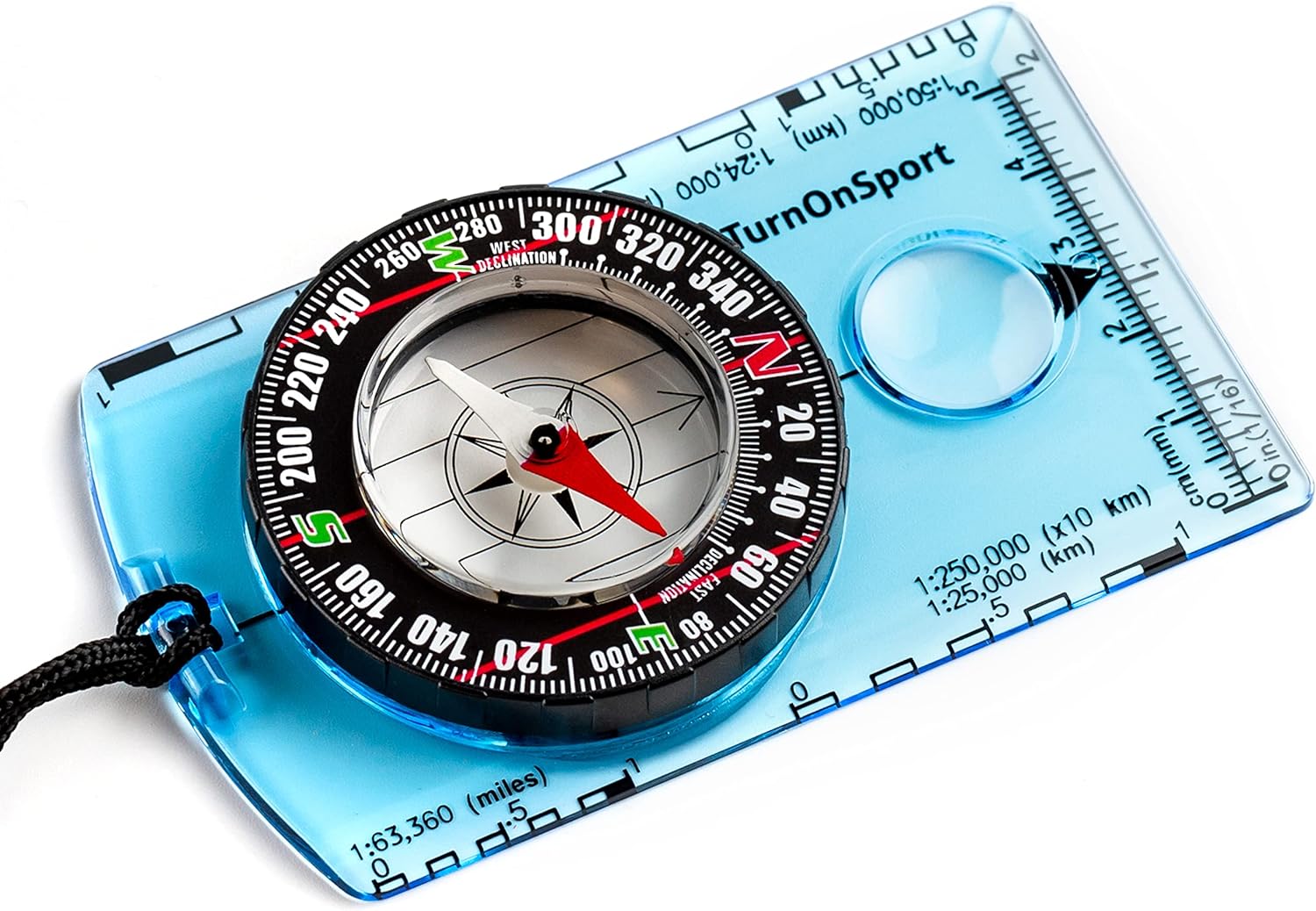Conquering the Course: Essential Features of Top-Tier Orienteering Compasses
Orienteering, the exhilarating sport of navigating unfamiliar terrain with the aid of a map and compass, demands precision and reliable equipment. The compass, your trusty guide through forests and fields, plays a pivotal role in your success. But with a variety of orienteering compasses available, how do you identify the ones that will lead you to victory? Dive into this comprehensive guide to discover the essential features that define a top-tier orienteering compass.
The Bedrock of Orienteering: Fundamental Features
Several core functionalities are paramount for an orienteering compass:
-
Baseplate with Map Visibility: A clear, transparent baseplate allows you to view the map underneath the compass rose. Look for a baseplate with metric and imperial scales for added versatility.
-
Orienting Arrow: This fixed arrow, typically located within the housing of the needle, aligns with the map’s north-south lines for accurate orienteering.
-
Direction-of-Travel Arrow: An adjustable arrow on the baseplate points in your direction of travel. This aids in aligning the compass with your desired course on the map.
-
Magnetic Needle: The heart of the compass, the magnetic needle should be balanced, rotate smoothly, and settle quickly on north. Look for a needle with good jewel bearings for minimal friction.
Enhancing Precision: Advanced Features for Orienteering Success
Beyond the basic functionalities, several advanced features elevate an orienteering compass from good to great:
-
Clinometer: This feature allows you to measure slope angles, crucial for navigating steep terrain and interpreting contour lines on your map.
-
Sighting Mirror: A sighting mirror allows for precise alignment with distant landmarks, ensuring accurate course correction. Look for a mirror with etched directional lines for added functionality.
-
Baseplate Scales: Having multiple scales printed on the baseplate allows you to match the scale of your map for more precise measurements.
-
Luminous Markings: Luminous markings on the compass housing, needle, and baseplate enable visibility in low-light conditions. This is essential for pre-dawn starts or navigating after sunset.
-
Rotating Bezel: A rotating bezel with directional markings allows you to set a course and easily follow it by aligning the bezel with the direction you want to travel.
Material Matters: Durability and Functionality
The materials used in an orienteering compass significantly impact its performance and longevity:
-
Housing: Look for a lightweight but durable housing, often constructed from military-grade plastics or high-strength aluminum.
-
Baseplate: A scratch-resistant baseplate made of acrylic or polycarbonate ensures clear map visibility and protects against wear and tear.
-
Needle: A high-quality, balanced needle with a jewel bearing ensures smooth movement and quick settling times.
Choosing the Compass for You: Matching Features to Needs
With a variety of orienteering compasses boasting various features, selecting the right one depends on your experience level and competition preferences:
-
Beginners: A basic compass with a clear baseplate, orienting arrow, direction-of-travel arrow, and a reliable magnetic needle is sufficient for beginners.
-
Intermediate Orienteers: As your skills progress, consider a compass with a clinometer for slope measurement and a sighting mirror for precise navigation.
-
Advanced Competitors: For elite orienteering, a compass with a rotating bezel, multiple baseplate scales, and luminous markings provides the ultimate edge.
FAQ: Equipping Yourself for Orienteering Success
Q: Are there any legal restrictions on the type of compass I can use in orienteering competitions?
A: Orienteering federations often have specific regulations regarding compass features. Always check the competition rules before purchasing a compass to ensure it’s compliant.
Q: How important is it to practice using my orienteering compass?
A: Familiarity with your compass is crucial. Practice using its features, aligning it with the map, and taking bearings before venturing out on a course.
Q: Are there any additional accessories I might need for orienteering?
A: Consider investing in a map case to protect your map from the elements. A whistle can be helpful for signaling for assistance in case of emergencies.
Q: Where can I find reputable orienteering compass brands?
A: Several brands specialize in orienteering compasses. Popular choices include Silva, Suunto, and Brunton.
Remember: An orienteering compass is an extension of yourself on the course. By choosing a compass with the features that match your skill level and competition needs, you equip yourself for success. So, explore the options, prioritize the features that matter most, and embark on your orienteering journey with confidence!






More Stories
Where to Watch USMNT vs Jamaica National Football Team
How I Met My Monster
How Should a Ring Fit